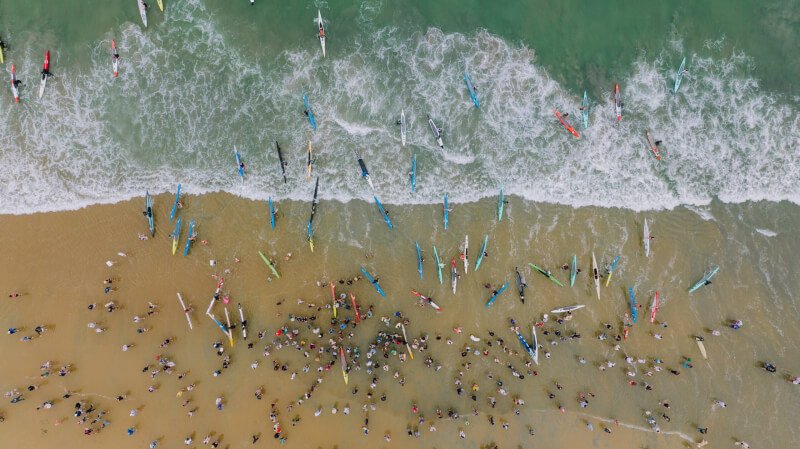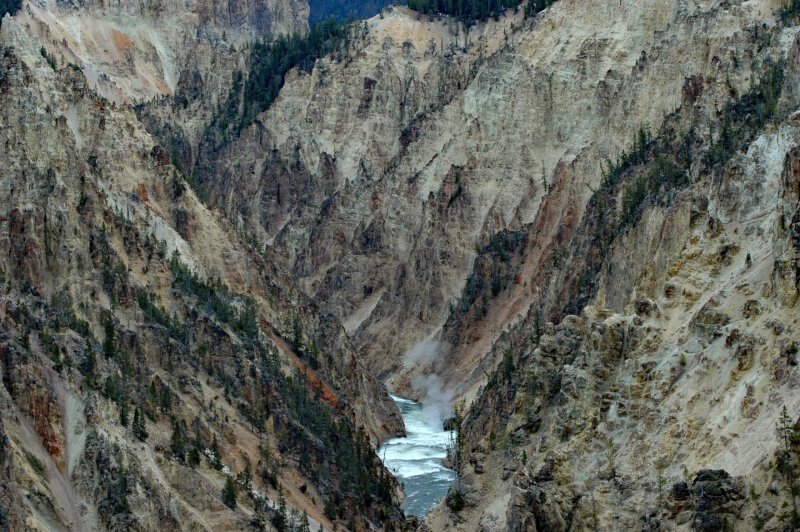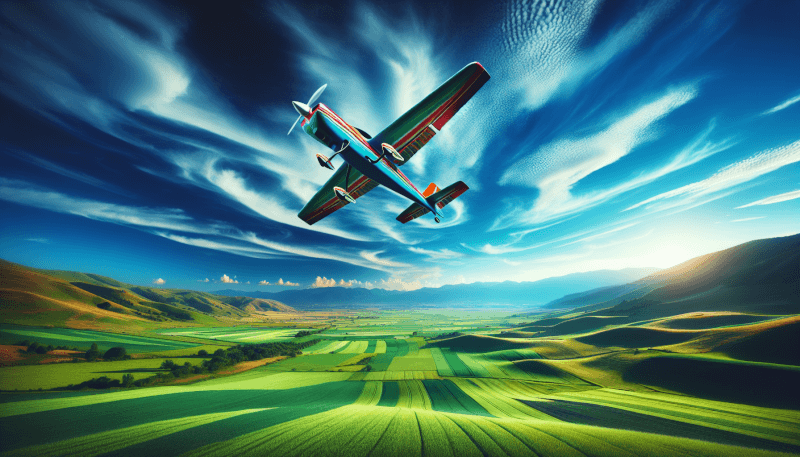Flying RC aircraft is a thrilling hobby that allows you to take to the skies and maneuver your own miniature plane or helicopter. But have you ever wondered where the ideal locations are for this exhilarating activity? In this article, we will explore the best environments for flying RC aircraft, whether you are a beginner or an experienced pilot. Discover the perfect spots to soar through the air, showcasing your aerial skills and enjoying every moment of this captivating pastime. When it comes to flying your RC aircraft, the environment you choose plays a crucial role in ensuring a safe and enjoyable experience. Whether you prefer outdoor or indoor settings, it’s important to consider factors such as open space, weather conditions, obstacle-free areas, and regulations compliance. In this article, we will explore the different environments that are ideal for flying RC aircraft, providing you with comprehensive information to help you make the best decisions for your flying adventures.

Outdoor Environments
Open Fields
Open fields are a fantastic choice for RC aircraft enthusiasts. These vast expanses of land provide ample space for maneuvering your aircraft and performing various maneuvers without the risk of collisions with obstacles. They offer unobstructed views, allowing you to enjoy uninterrupted flights and explore the capabilities of your aircraft to the fullest.
Parks
Parks are not only popular among families and outdoor enthusiasts but also among RC aircraft hobbyists. Many parks have designated areas specifically for flying RC aircraft, ensuring a safe and enjoyable environment for all. With their well-maintained grassy areas and often scenic surroundings, parks provide an inviting space to take your aircraft for a spin.
Sports Fields
Sports fields, such as soccer fields or baseball diamonds, can serve as excellent flying locations for RC aircraft. These fields are generally large, open spaces with well-maintained grass, providing a smooth landing surface. However, it’s important to ensure that the fields are not in use during your flying sessions to avoid any accidents or interruptions.
Beaches
Beaches offer a uniquely stunning backdrop for RC aircraft flying. With their wide stretches of sand and the sound of crashing waves, beaches provide a peaceful and picturesque setting for flying your aircraft. However, it’s important to take note of any local regulations that may restrict RC aircraft operation near beaches to ensure that you are flying within the permitted areas.
Desert Areas
Desert areas, with their vast and expansive landscapes, can be an exciting choice for flying RC aircraft. These areas often offer minimal vegetation and few obstructions, allowing you to fly freely without the risk of collisions with trees or power lines. However, it’s crucial to ensure that you have sufficient supplies, such as water and shade, as desert environments can be inhospitable and challenging for extended periods of time.
Indoor Environments
Indoor RC Flying Clubs
Indoor RC flying clubs are dedicated spaces specifically designed for indoor flying. These clubs provide a controlled environment for flying, with features such as netted walls and ceilings to prevent aircraft from escaping. They often have dedicated areas for different types of aircraft, ensuring a safe and organized flying experience.
Large Empty Spaces
If you don’t have access to an indoor flying club, finding large empty spaces such as warehouses or empty buildings can be a viable alternative. These spaces offer ample room for maneuvering your aircraft and practicing different flight techniques. However, it’s important to secure permission from the property owner and ensure that the space is safe for flying before proceeding.
Gymnasiums
Gymnasiums, with their high ceilings and open floors, can provide an excellent indoor flying environment. These spaces are often quiet and well-maintained, offering a controlled environment for practicing maneuvers and improving your flying skills. Additionally, gymnasiums often have access to amenities such as bathrooms and shelter, ensuring a comfortable experience for both pilots and spectators.
Warehouses
Warehouses, with their large open spaces and minimal obstructions, can serve as suitable indoor flying locations. These spaces offer the flexibility to set up obstacle courses or create challenging flying scenarios. However, it’s essential to ensure that you have permission to use the warehouse and take necessary precautions to ensure the safety of yourself and others.

Weather Conditions
Clear Skies
Flying RC aircraft under clear skies not only provides optimum visibility but also reduces the risks associated with adverse weather conditions. Clear skies allow you to see your aircraft clearly and maintain visual contact throughout the flight, ensuring better control and minimizing the chances of accidents.
Light Wind
Light wind conditions are ideal for flying RC aircraft. Gentle breezes can help stabilize your aircraft while still allowing you to maintain control. However, it’s important to consider the wind speed and direction before flying, as stronger winds can make it difficult to navigate and may even cause damage to your aircraft.
Moderate Temperature
Moderate temperatures offer a comfortable flying experience for both pilots and their equipment. Extreme temperatures, whether too hot or too cold, can affect the performance and longevity of your aircraft. Therefore, it’s important to choose environments with moderate temperatures to ensure optimal performance and avoid any potential issues.
Low Humidity
Low humidity conditions can positively impact the performance of your RC aircraft. High humidity levels can affect the electrical components of your aircraft and increase the risk of moisture damage. Therefore, selecting environments with low humidity levels can help ensure the longevity and optimal functioning of your aircraft.
Obstacle-Free Spaces
No Trees or Power Lines
When selecting an environment for flying RC aircraft, it’s crucial to choose areas that are free from potential obstacles such as trees or power lines. Trees can obstruct your line of sight and pose a risk of collisions, while power lines can create hazardous situations if you accidentally fly too close to them. Ensuring a clear airspace will help minimize the risk of accidents and keep your flying experience safe and enjoyable.
No Buildings or Structures
Similarly, flying in areas without buildings or structures is essential for the safety of both your aircraft and the surrounding property. Accidents happen, and having a wide-open space free from buildings or structures reduces the risk of damaging property or injuring others. Always prioritize safety and choose environments that are clear of any potential hazards.
No Crowds or Animals
Avoiding areas with crowds or animals is paramount when flying RC aircraft. Crowded spaces can increase the risk of accidents and injuries, while animals may become startled or pose a threat to your aircraft. Choose environments where your flying sessions can be conducted without endangering others or disturbing wildlife.
No Busy Roadways or Highways
Flying RC aircraft near busy roadways or highways is not only dangerous but also illegal in most areas. The potential for accidents and distractions from passing vehicles can jeopardize the safety of both yourself and others. Choose environments that are away from busy roadways or highways to ensure the safety and legality of your flights.

Regulation-Compliant Areas
Designated RC Flying Sites
Designated RC flying sites provide a regulated and controlled environment for flying your aircraft. These sites are specifically designated for RC aircraft operations, ensuring that you are within the legal boundaries and have access to all necessary facilities. Check with local authorities or RC flying clubs to find out if there are any designated sites in your area.
AMA Approved Areas
The Academy of Model Aeronautics (AMA) approves certain areas for RC aircraft operations. These areas often have established safety guidelines and amenities to support your flying experience. Flying in AMA-approved areas provides an added level of confidence, as you can rely on the organization’s expertise and support. Check the AMA’s website or reach out to your local AMA chapter to find AMA-approved flying areas near you.
Complying with Local Laws and Regulations
It’s essential to familiarize yourself with the local laws and regulations regarding RC aircraft operations in your area. Different jurisdictions may have specific rules and restrictions applicable to flying RC aircraft, including height limitations, flying boundaries, and required permits. Complying with local laws ensures not only your safety but also helps foster positive relationships between RC aircraft hobbyists and the community.
Altitude Considerations
Low or Flat Areas
Low or flat areas are generally suitable for flying RC aircraft, especially for beginners or those looking for a more relaxed flying experience. These areas offer a relatively straightforward flight trajectory and make it easier to maintain control of your aircraft. They are particularly suitable for beginners who are still learning the basics of flight and maneuvering.
Hilly or Mountainous Regions
Hilly or mountainous regions can provide a more challenging flying experience for experienced pilots. These areas offer opportunities for dynamic flight maneuvers and the chance to explore different flying techniques. However, flying in hilly or mountainous regions requires advanced piloting skills and careful navigation to avoid obstacles and maintain control.
High Altitude Areas
High altitude areas can present unique challenges for flying RC aircraft. The thin air and reduced atmospheric density at higher altitudes can affect the performance of your aircraft. It’s crucial to consider the capabilities of your equipment and make any necessary adjustments to ensure safe and stable flights. Additionally, high altitude areas may have specific regulations or restrictions, so it’s important to research and comply with any applicable guidelines.

Visibility and Lighting Conditions
Sufficient Lighting during Daytime
When flying RC aircraft during the daytime, it’s important to choose environments with sufficient lighting conditions. Good natural lighting ensures optimal visibility, allowing you to see your aircraft clearly and maintain control throughout the flight. Avoid flying in areas with excessive shadows, as they can make it difficult to track your aircraft’s movements.
Adequate Visibility during Nighttime
Flying RC aircraft at night requires additional precautions to ensure safety and visibility. Choose environments with adequate lighting, such as well-lit parks or designated night-flying areas. Additionally, outfit your aircraft with appropriate lighting equipment, such as LED lights or strobes, to enhance its visibility in the dark. Always prioritize safety and make sure you are complying with any local regulations regarding nighttime flying.
Avoiding Flying in Poor Lighting Conditions
Flying in poor lighting conditions, such as dense fog or heavy rain, is not recommended as it significantly reduces visibility and increases the risk of accidents. Poor lighting conditions can make it challenging to track your aircraft and maintain control, potentially leading to crashes or loss of the aircraft. Always prioritize safety and choose environments with favorable lighting conditions for your flying sessions.
Availability of Landing Spots
Large Open Spaces for Takeoffs and Landings
Having access to large open spaces for takeoffs and landings is crucial for flying RC aircraft. These spaces provide sufficient room for your aircraft to maneuver and perform landing approaches safely. Avoid areas with limited space or excessive obstacles that may hinder your ability to safely operate your aircraft.
Runway or Landing Strips
Choosing environments with designated runways or landing strips can enhance your flying experience, especially if you own a larger or more advanced aircraft. These dedicated areas provide a smooth, flat surface for takeoffs and landings, reducing the risk of damage to your aircraft. Look for local RC aircraft clubs or airfields that offer designated runways or landing strips for a more professional and controlled flying environment.
Water Bodies for Seaplanes
If you enjoy flying seaplanes, finding environments with accessible water bodies is essential. Lakes, ponds, or rivers provide the perfect landing spot for seaplanes, allowing you to experience the unique joy of taking off and landing on water. Ensure that the chosen water bodies are legal to fly over and do not pose any risks or restrictions before attempting seaplane operations.

Access to Facilities and Amenities
Bathroom Facilities
Having access to bathroom facilities can greatly enhance your flying experience, especially during longer flying sessions. Look for environments that have nearby restroom facilities to ensure comfort and convenience throughout your time spent flying.
Shelter or Shade
Flying RC aircraft in environments with shelter or shade can provide relief from hot sun or inclement weather conditions. This is especially important if you plan on spending an extended period outdoors. Shelter or shade can allow you and your equipment to stay protected and comfortable while enjoying your flying sessions.
Area for Spectators
If you enjoy flying your RC aircraft with an audience, choosing environments with designated spectator areas can help create a welcoming and enjoyable experience for everyone. Look for locations that have clearly marked areas where spectators can safely observe your flights without interfering with your operations or safety.
Distance from No-Fly Zones
Avoiding Airports and Flight Path Areas
One of the most critical aspects of flying RC aircraft is adhering to no-fly zones near airports and flight path areas. It’s crucial to avoid flying near or within the airspace designated for full-scale aircraft operations. This not only ensures the safety of manned aircraft but also helps maintain a positive reputation for RC aircraft hobbyists.
Keeping Distance from Military Bases
Military bases often have restricted airspace around them, and it’s vital to respect these boundaries. Flying near or within military bases can interfere with military operations and pose significant risks. Always research and adhere to any local restrictions pertaining to military bases to ensure the safety and legality of your flights.
Staying Clear of Restricted Airspaces
Restricted airspaces, such as those designated for emergency services or sensitive facilities, must be avoided at all costs. These areas have specific restrictions and may be monitored or actively patrolled. Ensure that you are aware of any restricted airspaces in your area and plan your flying locations accordingly to ensure compliance with regulations.
In conclusion, the best environments for flying RC aircraft offer open spaces, ideal weather conditions, obstacle-free areas, and compliance with regulations. Whether you prefer outdoor or indoor flying, it’s important to prioritize safety, adhere to local laws, and choose environments that enable you to enjoy your hobby to the fullest. Remember to always fly responsibly, respect others, and maintain a positive image for the RC aircraft community. Happy flying!


